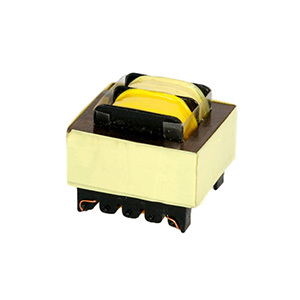NEWS
Understanding Switching Power Supply Transformers: A Guide for Electrical Applications
Release time:
Nov 15,2024
Switching power supply transformers are critical components in modern electrical systems, primarily used in power conversion applications. Unlike traditional transformers that operate at line frequency, switching power supply transformers function at higher frequencies, which allows for compact design and enhanced efficiency. These transformers are integral to switching power supplies, which convert electrical energy from one form to another, often adapting voltage levels to suit specific needs.
One of the primary functions of a switching power supply transformer is to isolate different sections of a power supply circuit while transferring energy from the input to the output. The high-frequency operation allows for smaller core sizes and lighter weights, making them ideal for applications where space is at a premium, such as in consumer electronics, telecommunications, and industrial equipment.
The design of switching power supply transformers is quite distinct. They typically utilize ferrite cores, which are excellent for high-frequency applications due to their low losses. The windings are also designed to minimize parasitic capacitance and inductance, which can affect performance. This design precision is crucial for ensuring that the transformer operates efficiently and reliably under varying load conditions.
Switching power supply transformers also play a vital role in enhancing the overall efficiency of power supply systems. By enabling efficient energy conversion, they help reduce power losses, which not only contributes to lower operating costs but also minimizes heat generation. This is particularly important in applications where thermal management is critical, as excessive heat can lead to system failure or reduced longevity of components.
Moreover, these transformers contribute to the reliability and safety of electrical devices. By providing isolation, they help protect sensitive components from voltage spikes and surges, which can occur in fluctuating power environments. This feature is essential in maintaining the integrity of various devices, from simple household electronics to complex industrial machines.
In summary, switching power supply transformers are indispensable in today’s electrical landscape. Their unique characteristics, including high-frequency operation, efficient energy transfer, and enhanced safety features, make them suitable for a wide array of applications. Understanding the role and functionality of these transformers can help consumers and professionals alike appreciate their importance in powering the devices that drive our modern world.
One of the primary functions of a switching power supply transformer is to isolate different sections of a power supply circuit while transferring energy from the input to the output. The high-frequency operation allows for smaller core sizes and lighter weights, making them ideal for applications where space is at a premium, such as in consumer electronics, telecommunications, and industrial equipment.
The design of switching power supply transformers is quite distinct. They typically utilize ferrite cores, which are excellent for high-frequency applications due to their low losses. The windings are also designed to minimize parasitic capacitance and inductance, which can affect performance. This design precision is crucial for ensuring that the transformer operates efficiently and reliably under varying load conditions.
Switching power supply transformers also play a vital role in enhancing the overall efficiency of power supply systems. By enabling efficient energy conversion, they help reduce power losses, which not only contributes to lower operating costs but also minimizes heat generation. This is particularly important in applications where thermal management is critical, as excessive heat can lead to system failure or reduced longevity of components.
Moreover, these transformers contribute to the reliability and safety of electrical devices. By providing isolation, they help protect sensitive components from voltage spikes and surges, which can occur in fluctuating power environments. This feature is essential in maintaining the integrity of various devices, from simple household electronics to complex industrial machines.
In summary, switching power supply transformers are indispensable in today’s electrical landscape. Their unique characteristics, including high-frequency operation, efficient energy transfer, and enhanced safety features, make them suitable for a wide array of applications. Understanding the role and functionality of these transformers can help consumers and professionals alike appreciate their importance in powering the devices that drive our modern world.


















